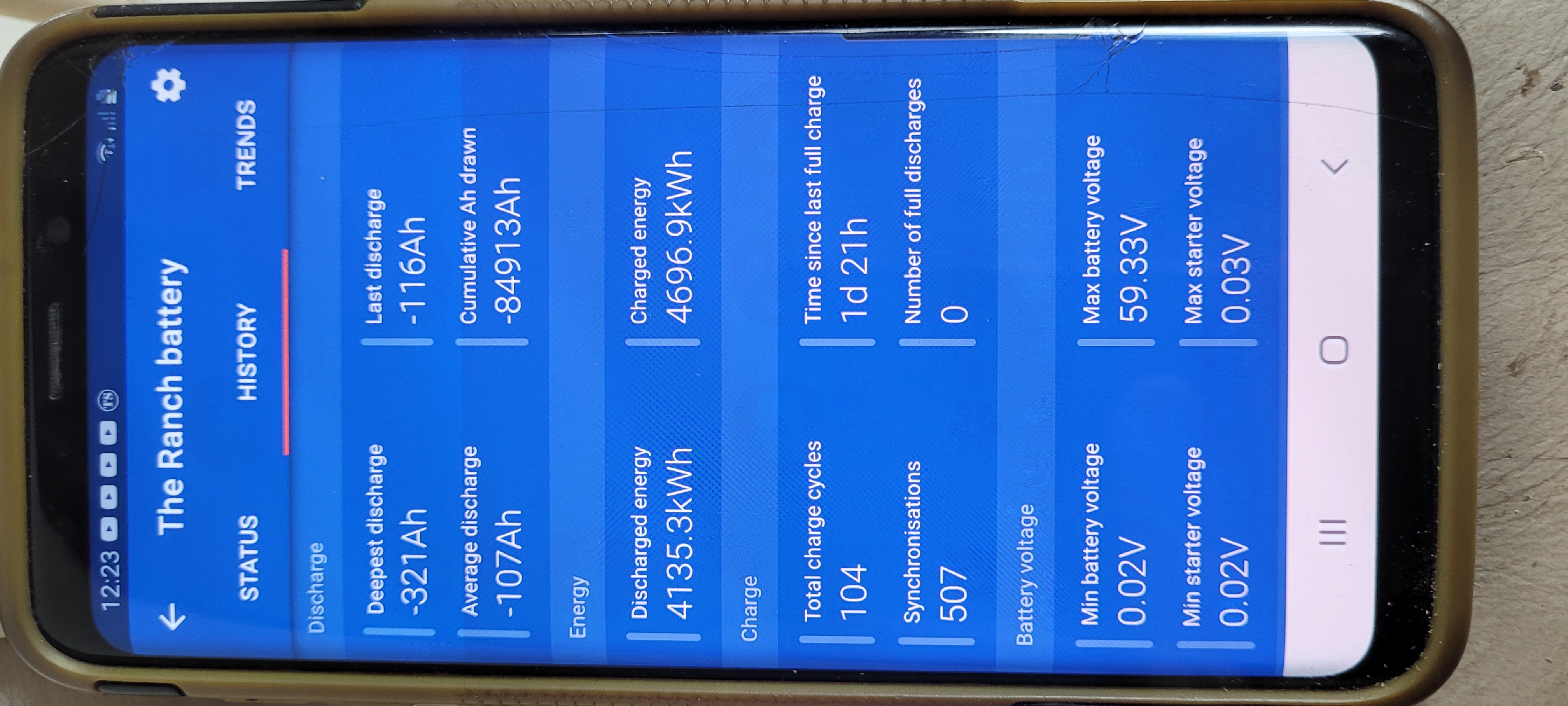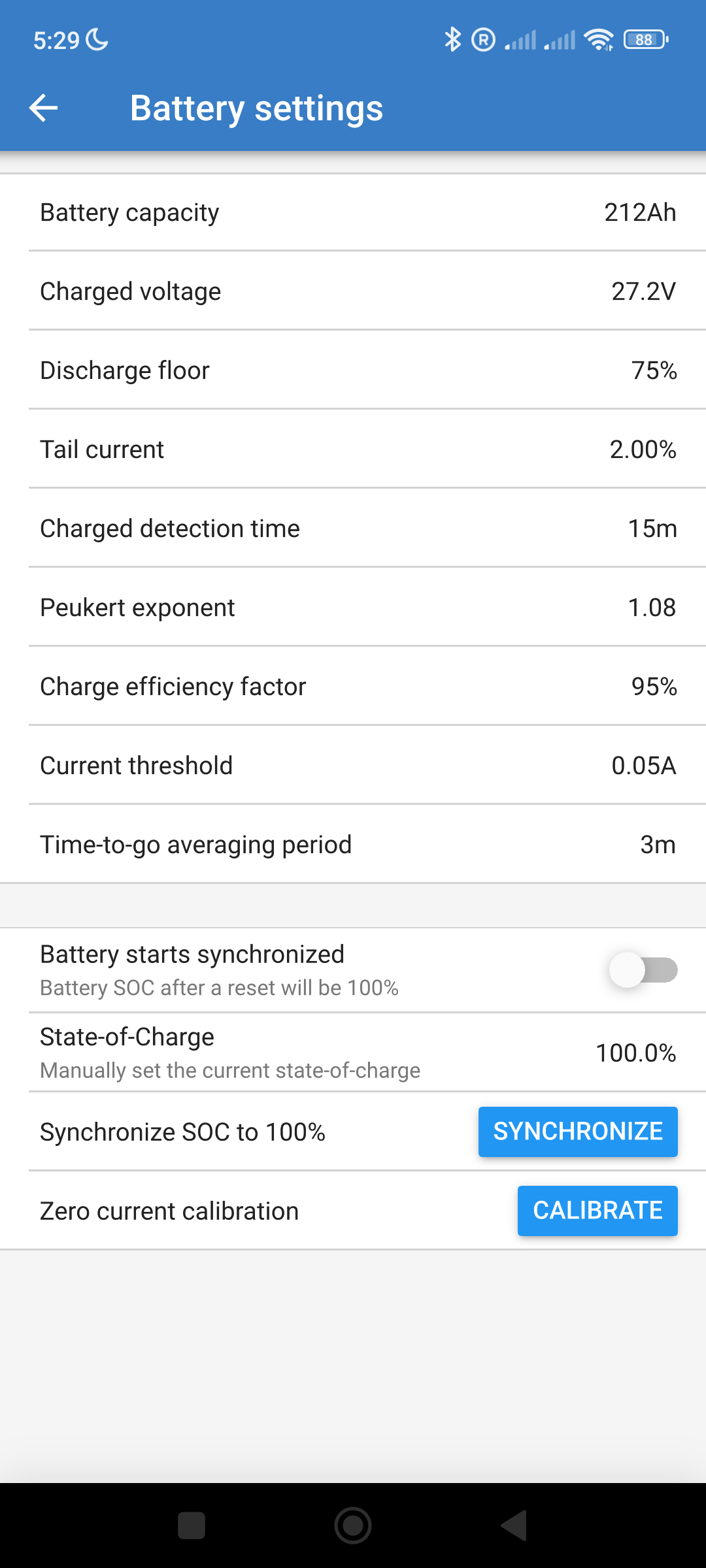Hi I've seemed to have lost a lot of capacity in my battery bank 8x 160 AH Victron lead carbon, they were new in mid 2019 so just over 3 years old, the BMV has recorded 104 charge cycles and 507 full charges ( sync to 100,%) our average discharge is 107ah, we now get a low voltage warning around 80ah, basically we have to run the generator in the evening to get something like 90% change if the solar hasn't got it above 90% or we end up with low battery warning in the morning or shutdown with voltage about 38 volts, the battery settings are hopefully in the picture below with the history page.
I've spoken to my dealer he's essentially said out of warranty and buy new lithium! I'm off grid so totally dependent on the battery bank, I've checked and cleaned all the terminals my next option is possibly removing 4 of the pack and getting them tested and charged with mains power to see if they are still usable, interested to know if this is normal for 3 year old batteries or if something is setup incorrectly?


